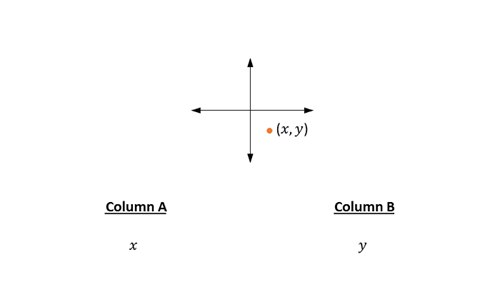The Johns Hopkins Center for Talented Youth (CTY) is a world leader in gifted education, dedicated to identifying exceptional students and providing them with the tools to reach their potential. To identify gifted students, the CTY administers the School and College Ability Test (SCAT). High SCAT scores are crucial for acceptance. Learn more about:
- SCAT format, levels, and scoring
- Sample questions and practice resources
- The John Hopkins CTY Program
Try Our Free SCAT Sample Tests
What is the SCAT?
The School and College Ability Test (SCAT) is a multiple-choice, standardized test administered by the Johns Hopkins Center for Talented Youth (CTY). It is an above-grade level test which assesses math and verbal reasoning abilities among gifted children. Once your child takes the SCAT, scores remain valid until s/he reaches the next level (i.e. from elementary to intermediate, or from intermediate to advanced).
If you are a teacher looking for the most complete studying experience for their students, click here!
What is an “Above-Grade-Level” Test?
An above-grade-level test assesses students at a higher grade level than the one they are in at the time the test is administered. For example, 2nd-3rd grade students take a test designed for 4th-6th grade students.
| Free SCAT Practice Resources |
| SCAT Elementary Sample Test |
| SCAT Intermediate Sample Test |
| SCAT Advanced Sample Test |
How is the SCAT Scored?
The SCAT is scored through a combination of both a raw and scaled scoring system. The scoring is section-specific.
Raw Score. The raw score is calculated by tallying the total number of questions answered correctly out of the 50 scored questions.
Scaled Score. The raw score is converted into a common scaled score. This enables administrators to compare various scores to each other. Scaled scores range from 400 to 514, according to the test version. Scaled scores are finally converted into SCAT Score Percentiles.
Find out what score your child needs to be accepted to the JHU CTY programs.
What Do the Different Test Levels Mean?
There are three different levels of the CTY SCAT:
- Elementary SCAT - 2nd and 3rd grade students take the Elementary SCAT, which is designed for 4th-6th graders. The test is scored in comparison to 4th and 5th graders, respectively.
- Intermediate SCAT - 4th and 5th grade students take the Intermediate SCAT, which is designed for 6th-9th graders. The test is scored in comparison to 6th-9th graders.
- Advanced SCAT - 6th-8th graders take the Advanced SCAT, which is designed for 9th-12th graders. The test is scored in comparison to 9th - 12th graders.
What Types of Questions Are on the SCAT?
The SCAT is made up of two sections, including quantitative reasoning and verbal reasoning:
The quantitative reasoning section on the SCAT assesses a student’s comprehension of number operations and mathematical reasoning. This section includes multiple choice mathematical comparisons, consisting of two quantities, of which students must determine which is greater than the other.
The SCAT verbal section assesses a student’s verbal reasoning and vocabulary skills. This section includes multiple choice verbal analogy questions, consisting of two words that go together in a certain way, followed by four pairs of words (the answer choices). Students need to select the pair of words with the same relationship as the first two words to best complete the analogy.
How Many Questions Are on the Test? How Much Time Is Given to Complete the Test?
The SCAT test has two sections: Verbal and Quantitative. Each section includes 55 questions, out of which five are experimental questions that are not counted towards the student’s final score. Each section is 22 minutes long, with an optional 10 minute break in between the two.
SCAT Test Level Sample Questions
SCAT Sample Question- Elementary Level
Which column is bigger?

SCAT Sample Question- Intermediate Level
Which column is bigger?

SCAT Sample Question- Advanced Level
The given pair of words is related to each other in a certain way. Choose the pair of words that is related to each other in the same way.
Counselor : advice ::
7 Preparation Tips for the SCAT
- Prioritize, but don’t sacrifice. You will undoubtedly have some topics that are harder for you than others. No worries! Start with the more challenging material. However, make sure you schedule some time for the easier stuff as well. Never assume you know what you haven’t taken the time to find out.
- Keep sleep, exercise, and nutrition in check. Unsurprisingly, your brain is not disconnected from your body. In fact, the two are partners in crime when it comes to studying. We therefore recommend giving your body ample time to rest, exercise, and refuel with the proper nutrition.
- Know your roots and affixes. To help quickly boost your vocabulary, we recommend studying roots and affixes, as well as the words themselves. For instance, dis- means opposite of or not, a good bit of knowledge to have when you see a word you may be a bit confused about, such as discombobulated.
- Master your mathematical operations. The quantitative section of the SCAT Is largely based on mastery of math operations and procedures. We recommend therefore that you make sure you are properly acquainted with as many as possible.
- Stick to a schedule! Nothing keeps you more committed to a routine than a schedule. Make sure to keep your studying process in check, by maintaining your prepping process within clear timeslots and deadlines.
- Don’t study late in the evening. If possible, avoid studying at the point of the day when your body is ready to rest. More often than not, this becomes the least effective hour for taking in new knowledge.
- Use SCAT practice tests! Nothing helps preparing for a specific test more than hands-on experience with that exam. We recommend practicing for the SCAT with full section-specific practice tests.
Test-Taking Tips for Your Child's Upcoming Exam
Boost your SCAT Scores!
Explore our SCAT Practice Packs with
Tests, Quizzes and Expert Tips from $49
Some More Important Facts About the SCAT
- SCAT scores remain valid until the student reaches the next SCAT level (for example going from elementary to intermediate), so there is usually no need to take the SCAT every year
- The SCAT (School and College Ability Test) is a multiple choice test administered by the Johns Hopkins Center for Talented Youth (CTY)
- The SCAT Test is an above-grade level test, therefore, it is important to prep your child for high-level questions using SCAT practice tests
- The SCAT Test consists of two sections: a Verbal section and a Quantitative section, testing verbal and math abilities, respectively
- The SCAT Test is a computerized test and is available at computer test centers
SCAT Test Prep
In order to succeed on the SCAT, it is important to set aside time and practice with TestPrep-Online. Help your child start preparing for the Elementary SCAT Test for 2nd and 3rd graders, the Intermediate SCAT Test for 4th and 5th graders, or the Advanced SCAT Test for 6th-8th graders so s/he can be confident and ready to succeed on the day of the test.
Boost your SCAT Scores!
Explore our SCAT Practice Packs with
Tests, Quizzes and Expert Tips from $49



